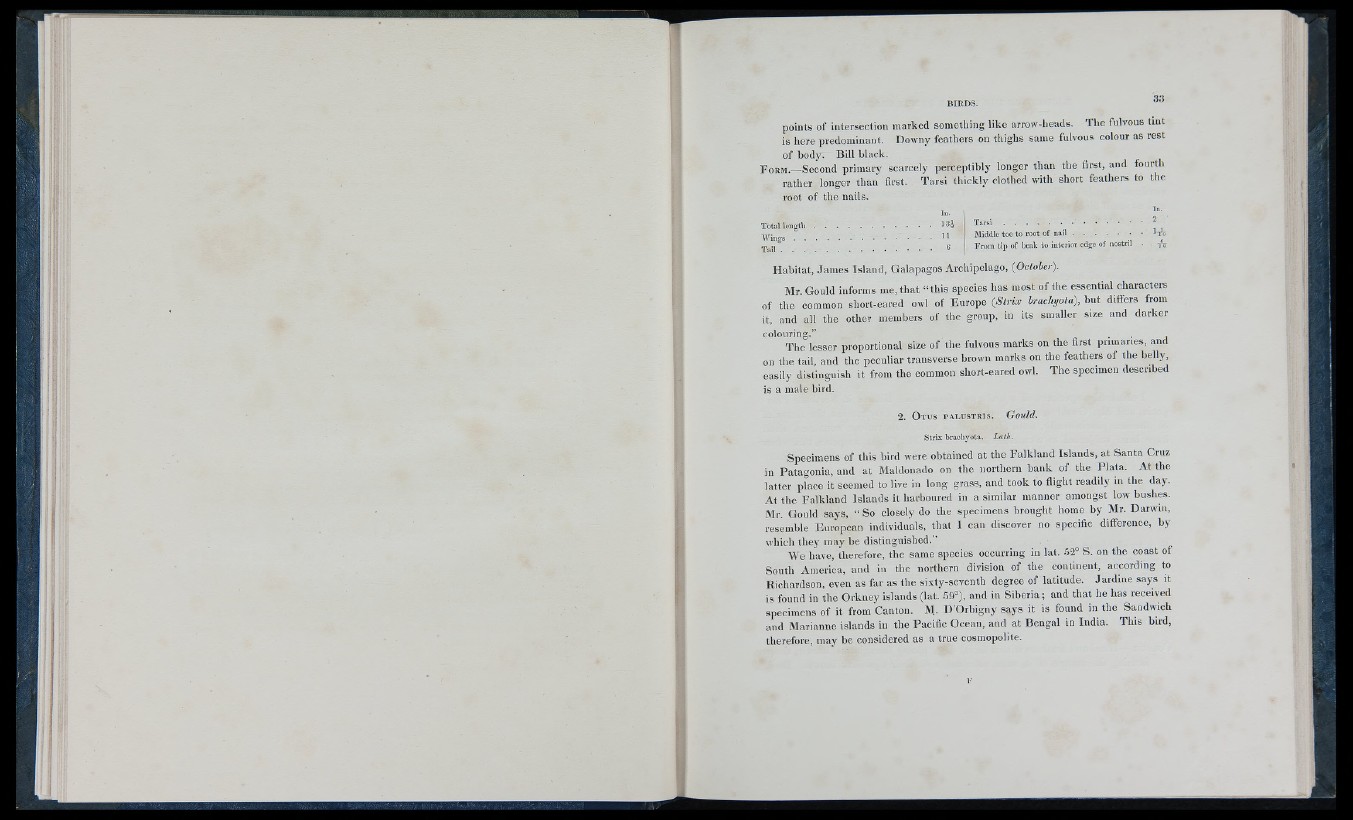
points of Intersection marked something like arrow-heads. Tlie fulvous tint
is here predominant. Downy featliers on thighs same fulvous colour as rest
of body. Bill black.
F o r m .— Second primary scarcely perceptibly longer than tbe first, and fourth
rather longer than first. Tarsi thickly clothed with short feathers to tlie
root of the nails.
Total longtli 13i
11
6
Tarsi ........................................
Middle toe to root of n a i l .............................
From tip of beak to interior edge of nostril
2
1%
Habitat, James Island, Galapagos Archipelago, (October).
Mr Gould informs me, that “ this species has most of the essential characters
of the common short-eared owl of Europe (Strix brachyota), but differs from
it, and all tlie other members of the group, in its smaller size and darker
colouring,” . .
The lesser proportional size of the fulvous marks on the first primaries, and
on the tail, and the peculiar transverse brown marks on the feathers of the belly,
easily distinguish it from the common short-eared owl. The specimen described
is a male bird.
?
2 . O t u s p a l u s t r i s . Gould.
Strix brachyota. Lath.
Specimens of this bird were obtained at the Falkland Islands, at Santa Cruz
in Patagonia, and at Maldonado on the northern bank of the Plata. At the
latter place it seemed to live in long grass, and took to flight readily in the day.
At the Falkland Islands it harboured in a similar manner amongst low bushes.
Mr. Gould says. “ So closely do the specimens brought home by Mr. Darwin,
resemble European individuals, that I can discover no specific difference, by
wliieli they may be distinguished."
We have, tlierefore, tlie same species occurring in lat. 52° S. on the coast oi
South America, and in the northern division of the continent, according to
Richardson, even as far as the sixty-seventh degree of latitude. Jardine says it
is found in tlie Orkney islands (lat. 59°). and in Siberia; and that he has received
specimens of it from Canton. JI. D'Orbigny says it is found in the Sandwich
and Marianne islands in the Pacific Ocean, and at Bengal in India. This bird,
therefore, may he considered as a true cosmopolite.